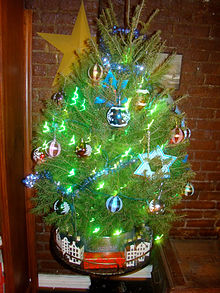I've written about “this day” in a couple of past blogs, including this one on our website. Sigh. I even posted a tweet on my personal account that I “had no plans,” passive-aggressively playing for sympathy (or maybe a date?).
An article I came across in a student publication called the Miami Hurricane makes a strong point, almost a manifesto, “the fact that the day went from one about beheading to betrothing is proof that we have the ability to radically transform this day into anything we want. And transform we did.” To some extent, yes. A day commemorating an early Christian martyr was also proclaimed as the day birds began to mate and is now essentially aisles in retail stores filled with items in various shades of red and pink.

But is that its end: Hallmark, kitschy images of cupids and teddy bears, overworked florists walking on floors covered with stem cuttings, angst about making restaurant reservations in time and buying the perfect gift?
The article I reference above mentions how some campus organizations are making the holiday more gender-inclusive and include queer narratives in its celebration.
It's interesting though, that queer narratives that either code implicitly or explore explicitly romantic relationships (with varying degrees of intimacy) don't subscribe (because they have to) to what is essentially a kitschy bowdlerization of Victorian sensibilities about gender relationships (which were perhaps more idealized than real).
In fact, in the heady days of LGBTQ liberation in the 1970s (essentially the product of social changes that began in the 1960s), an era that rejected aesthetically (and culturally to some extent) the “hearts and flowers/moon and June” sentimentality of previous eras, gay erotic filmmakers produced work that probes tensions in romantic, intimate relationships on so many levels. Marginalization in this case, as with much groundbreaking art, becomes the space and time to bend and even break conventional social boundaries.
For example, in Andrew Herbert's Song of the Loon, in the 19th century, Ephraim, a white man, has left his lover and taken up with a trapper, Cyrus. Ephraim wants to settle down to an outdoors life of bliss as the object of affection of only one man, but Cyrus knows that Ephraim isn't dealing with his own, or his lover's, emotions on a realistic level. He takes Ephraim to an old Native American medicine man, who imparts the wisdom of the ages to the young blond buck (through words and hallucinogenic visions): Sex and love are not one and the same.

And in Tom DeSimone's The Idol, an young athlete's (played by Kevin Redding) struggles with coming to terms with his sexual orientation shows how sexual activity and intimate relationships are not mutually exclusive. In fact, no “one” person ends up being the ideal/idol in this film for its protagonist.

Steve Scott's Track Meet parallels the story of The Idol, focusing on a young track star's (played by Gavin Geoffrey) tension in coming out and accepting himself. Romance, strength, affection, and lovemaking are explored by Gavin as he discovers himself and the world of gay sex.

What's interesting is the coming out narrative present in these films, because of how its complex psychosocial dynamic of fear and repression but, more significantly, self-discovery and self-acceptance, and, ultimately, liberation, subverts the cloying and also creatively bland Valentine's Day sensibility.
Yes, of course, times have changed, but I do wonder if more LGBTQ-themed Hallmark Valentine's Day cards is the blessed fruit of liberation. The struggle of the past should have taught LGBTQ persons to expect more; that the hearts and flowers are transitory and superficial, and that the end is not finding the “One,” but the glorious and at the same time heartbreaking day-to-day challenge of loving him/her/they.
For highlights from more of our romance-oriented films, also check out this video on our YouTube channel.








 Join our Email List
Join our Email List Like Us on Facebook
Like Us on Facebook Instagram
Instagram Youtube
Youtube Follow Us on Twitter
Follow Us on Twitter Follow us on Pinterest
Follow us on Pinterest